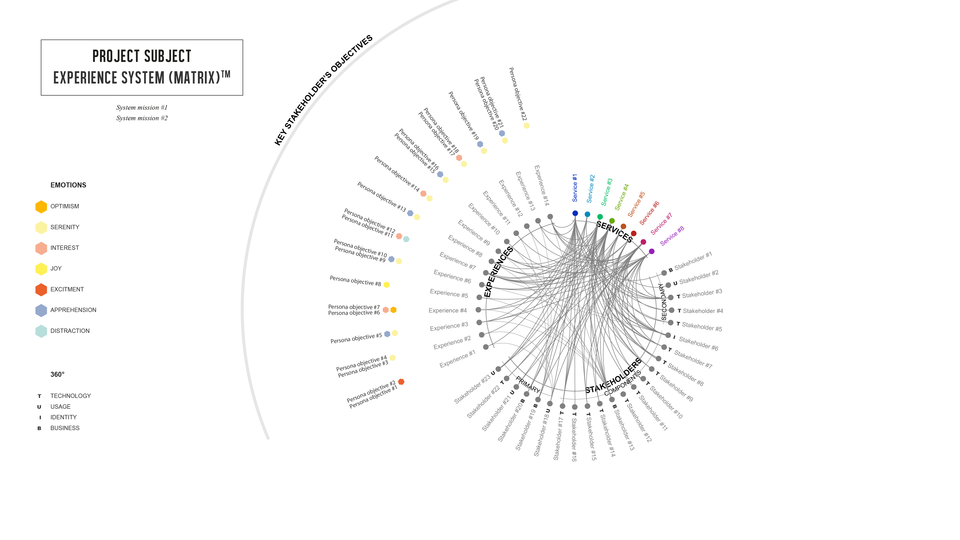
Designers in the age of experience confront a new challenge, a real and complex task. When designing for life, we are not designing only products or experiences, but experience that is really a system of systems.
Global information systems may be the most important and powerful engines of our new world. The continuing emergence of planetary scale computation as a meta infrastructure of information is altering the arrangement of our lives. Pervasive computing at the urban scale and mobile interfaces on the perceptual scale are interwoven and modifying deeply how we live, move, make, dwell, and educate ourselves.
Computation operates in ways that surpass and overflow our human capacities. It already acts without human balance when delivering access for humans to make decisions; so, it is the right place to start to question how we tackle our challenges today…by design.
With the shift around 2008 in the “digital age” and “smart cities,” things got more blurry, complex and darker. Software is becoming a ubiquitous feature of our lives and the world—in our hands, our buildings and cities, our multi-scale mobility, our search and queries; but with so much unique data, it becomes harder and harder to see the whole picture at once.
Problems which are arising today cannot be defined in isolation. They cannot be engaged without cross knowledge and specific technical skills, know-how and practice from all the stakeholders.
Take one particular challenge: climate change and air pollution. We are losing sight of our priorities and decision making capacities because we lack adequate vocabulary, imagination and solutions to engage at a planetary scale. So, we engage poorly while the worldwide problem is getting out of hand.
We need new and better models to design for complexity by embracing a problem in a systemic way. We need as many inter-related elements as possible playing out on a large field to make predictions and consequences of actions difficult or impossible to ignore. To prevent the fragmentation of our lives, we need to design the holistic megastructure that should be the re-design of “what we have” to “what we want.” As in Nature, we can start following the logic of a system of systems when designing with the world (our Earth) as the central aim.
We need a new “form” for a large, computational and coherent whole that unites seemingly unrelated and isolated bits of big data: from smart grids, cloud, mobile and urban scale applications, universal addressing systems, ubiquitous computing, robotics and artificial intelligence (AI).
Design projects should involve large number of stakeholders, requirements, conditions and implications, all of which interact in complex ways. We need opportunistic and experimental approaches to outline a design project of new interventions that operate on and take up a collaborative megaproject.
We need design to be holistic, detailed, intuitive, knowledge-driven, iterative and tacit. We need to consider consolidating design cultural, institutional and technical systems through the expansion logics of planetary scale computation; and then we need to apply that scale when imagining, building scenarios and engineering using simulations and testing of alternative effects.
Design is applying system thinking when designing experiences.
To develop and understand such a process and its associated complex models requires increasing attention to the research space that describes the total technological, virtual, physical and social space in which it unfolds.
We become, in fact, what we are as humans by “making” that which in turn makes us. We are “homo Faber”—we are “makers.” We have always thought through tools: it is how we mediate the world and are mediated by it. When we interrogate how things work, we today turn naturally to software, to the computation “tool of the digital age. ” Software, however, should not be reduced merely to describing things or making them, but used as a means to think them through.
Computation is both how our culture designs and is itself what we need to design better.
Our mission at Dassault Systèmes is the definition of this new design space, both real and virtual. In this space, we designate spatial, cultural, media and social settings in which the design process takes place when addressing complex tasks. Why consider software and system as just means to design for life? Since software is lingual as well as technological, it is a universal mean. We need to consider computation as not just machinery, but also the logic of culture and of design.
With this aim, we engage in a convergence of the design process and the system architecture approach. Our design and systems engineering teams at Dassault Systèmes have shared their respective practices between design thinking and complex systems engineering. This collaborative project gave us insights about several shifts: the way people get involved in project ecosystems, the way to address the call for more disruptive innovation, the empowerment of the growing capabilities of computers, the critical need to take into account the full complexity of humans. The awareness of these shifts were shared between both disciplines.
The results break brand new ground in design practice. To design for life.

